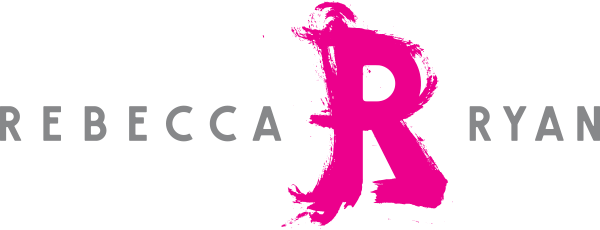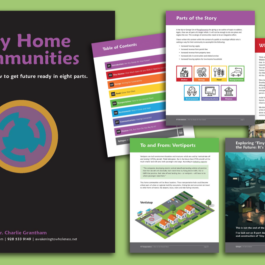What are the top 10 trends for the next ten years? Download the report here.
What do you get when a local chamber of commerce faces a triple challenge, like a pandemic, economic recession, and civil unrest?
You get lessons learned and stories of excellence that are valuable in calmer times, too – for leaders of chambers and many other organizations.
Read on for selected insights on what we have to get right.
This article is based on our Futures Friday conversation among three award-winning chamber executives, Christy Gillenwater (Chattanooga, TN), David Brown (Omaha, NE), Kit Cramer (Asheville, NC), and futurist Rebecca Ryan.
Building and leveraging diverse, strong, and resilient relationships
Like with everything else, the triple challenges forced chambers to pause and reassess their relationships:
Where, how, and with whom do I have existing relationships that can help our chamber and members?
What new relationships do I need to develop now to fill any gaps in needed relationships?
For example, collaboration and alignment thrived during the pandemic thanks to regular calls among chamber, city, and county representatives and strategic partners, month after month and across sectors.
The frequency of such interactions can be turned up or down depending on circumstances but ideally remains common enough to be valuable and meaningful for participants.
Also, consider the following tactics:
Recruit and collaborate with board members and trusted partners with deeper roots in the communities where they work.
Regularly use a mix of face-to-face and remote approaches to building trust and collaboration, reaching across lines, and solving problems.
Use strategic foresight initiatives to expand, diversify, and deepen your connections while aligning with a broader vision for the community.
Nurturing practical hope
Members naturally seek the facts, like un-editorialized information on the status of the disease, up-to-date information on government regulations about staying open and protecting staff/customers, and resources available to help them reopen quickly and successfully.
But they also seek hope.
Inspiring hope in a practical and effective manner requires three ingredients: a meaningful vision or goal for the future and two types of thinking which we described here previously:
Hopeful thinking requires that a person (or group) believes both – that (s)he can find pathways to a desired goal (“pathways thinking”) and has the ability and determination to use those pathways (“agency thinking”).
For example, offering support and ideas for rethinking business models strengthens both members’ ability to find pathways to their goals and their sense of agency.
Here is a more generic set of questions for each type of thinking that members can use:
Pathways Thinking Prompts
What is going on?
Where do I want to go?
What is stopping me?
How might I get there (anyway)?
What’s another way?
Agency Thinking Prompts
Which strengths can I use to achieve my goal?
Which aspects of my current situation work to my advantage?
When was I successful in similar situations in the past, and why?
Where and how does your team empower your audience with practical hope for the future?
Generating co-benefits
What do all of the following have in common? Water multiple plants with one hose. Feed multiple birds with one seed. Make multiple friends with one gift.
They’re all examples of benefiting 2+ stakeholders in one fell swoop. These analogies get the point across and involve zero bird-killing. Super, right?
You can also use this lens in building brighter futures.
For example, the Asheville chamber helped create a win-win-win through a system of new gift cards that empower larger employers in the region to directly support local businesses, especially those owned by people of color, women, and grocery stores. In the process, the chamber, too, generated income to reinvest in its services and staff. A different example comes from the Chattanooga chamber, which uses its strategic foresight plan to frame and guide its responses to the triple challenges today and continue to reinforce and progress on its vision for the city and Hamilton County.
Where and how are you designing for co-benefits for stakeholders and the future?
Pacing strategic priorities
In the face of a pandemic, economic recession, and civil unrest, all three chambers found that their strategic foresight priorities remained “on point.” For example, in Asheville, the priorities of the AVL 2025 Strategic Plan continue to resonate with the community. That makes sense if you take a closer look at what they are, e.g., building a resilient and well-educated workforce and targeting fast-growing, future-facing, high-wage industries.
However, the triple challenges raised questions about pacing – what to speed up or slow down.
In Chattanooga, the five priority areas of the Velocity 2040 vision include one related to infrastructure. Reduced driving (at least at the time of this Futures Friday panel discussion) did not eliminate but lowered the urgency of that priority.
In Omaha, the community worked with our team to revisit the Omaha 2040 plan with these questions in 2020:
What parts of our 2040 plan are still relevant?
What’s possible now that wasn’t before?
What do we need to speed up or let go?
The results: The community continues to support the plan’s directions and asks community leaders to intensify and accelerate their ongoing efforts in two key areas:
Diversity, equity, and inclusion, which was already an important element in the original plan; and
Quality of Life, recognizing that “place” matters in retaining and attracting talent.
What about you?
When and how do you assess the pacing of your long-range priorities? How do you know whether your organization or alliance is making a difference fast enough on the greatest priorities?
To hear more stories and lessons, watch a recording of this conversation below.
If you enjoyed this post, please subscribe to our newsletter.

Yasemin Arikan
Yasemin (Yas) Arikan operates the research vessel. She is a futurist who uses foresight and social science methods to help clients understand how the future could be different from today and then use these insights to inform strategy and vision. Her work includes developing scenarios on the futures of public health, health care, society and technology for associations, foundations, government, and business. Bonus: Yas can help you take your gift wrapping game to the next level. And she can talk with you about it in English, German, or Turkish. Watch Yas' Q&A on how NGC helps organizations prepare for the future using Strategic Foresight.
Yasemin Arikan Promoted to Director of Futures Research
NEXT Generation Consulting (NGC) announced the promotion of Yasemin Arikan to Director of Futures Research. Arikan will lead the company’s efforts to...
Is Your Housing Market Ready for Your Future?
One of the biggest problems facing many cities and towns is inadequate housing. This problem is most acute for seniors, veterans with disabilities, and low-income groups ...
Three Things Martha Stewart Gets Right About Return to Office (RTO)
The original influencer and the person who invented the "Home" retail category, Martha Stewart, became the latest CEO to tell employees to get back to the office five day...








